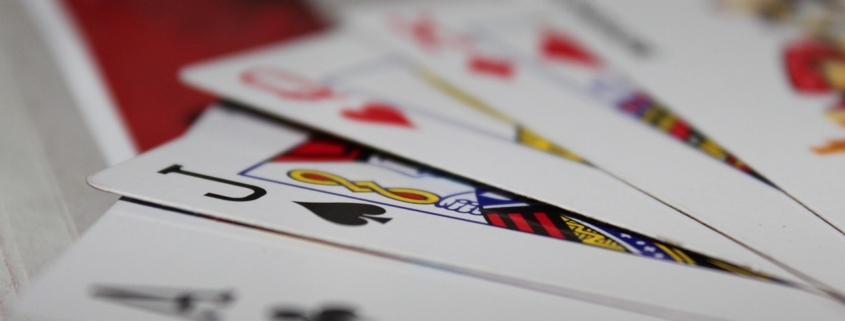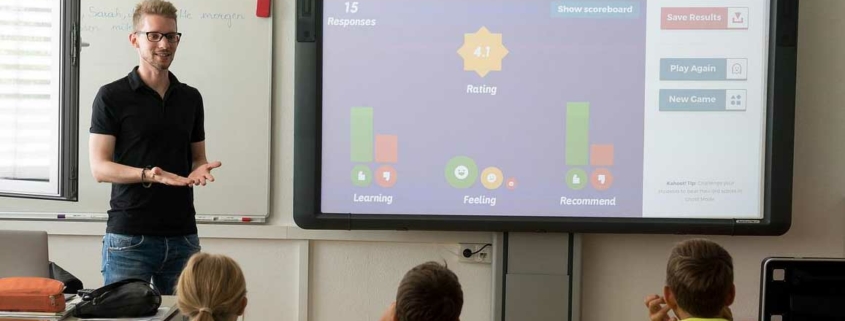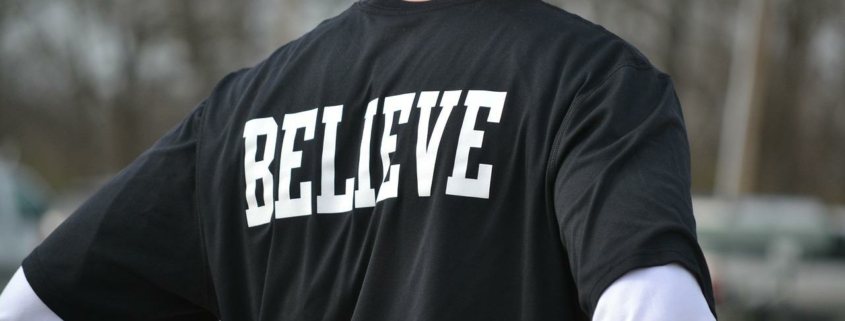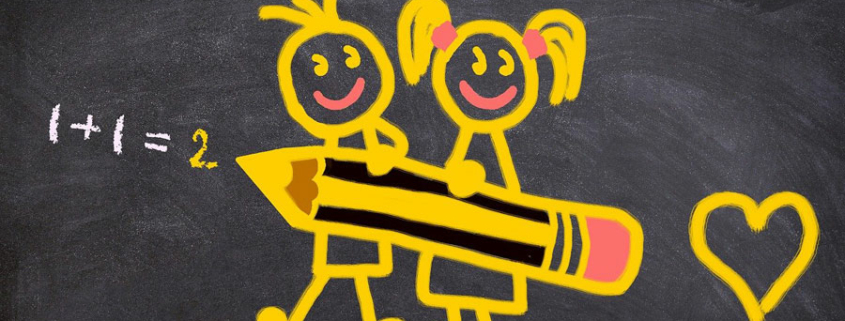Many would think this newsletter is always about the brain. Scientists are discovering that while your brain runs your body, the body (in turn) sends signals to regulate your brain. Everything that makes you sick influences both mind and body. Are you interested in better health and energy for the upcoming school year? This post has answers. Stop compromising your health and vitality; it’s time to do a deep dive.
The Research
Here is this month’s insight. We hear of overstressed teachers with profound fatigue (many have walked away from work.) Something is compromising their health and vitality big time. Let’s learn why many women struggle as they get older. Let’s open the door to some of the relevant and recent discoveries. In this issue, we’ll address three discreet ways many females struggle as they age and what to do about it.
The Research and Application
1. Managing Your Menopause
Menopause is a dynamic neurological (brain) transition that significantly impacts brain structure (size and shape), connectivity (for thinking), and metabolic profile (energy levels) during the midlife endocrine aging of the female brain (Mosconi, et al. 2021). In short, anyone who dismisses menopause as “just the end of your period” has no idea what they’re talking about.
SYMPTOMS
Each woman’s symptoms will vary. For some, there are hot flashes, chills, mood changes, sleep issues, thinning hair, dry skin, and incontinence. Others may get the more physical and emotional symptoms of menopause which disrupts sleep, lowers energy, or affects emotional health. For others, there are cognitive changes such as forgetfulness, “brain fog,” and difficulty concentrating. In fact, cognitive decline is one of the most frequent complaints of women undergoing the menopausal transition, with a 44%-62% prevalence (Conde, et al., 2021).
In short, the ending of your period is the start of another time in your life.
Menopause is the time that marks the end (if you’ve gone 12 months without a period) of your menstrual cycle. Menopause can happen in your 40s or 50s, but the average age is 51 in the United States. Because all women are unique, the symptoms will vary.
Is HRT (hormone replacement therapy) safe? The original study that got so many women to disregard HRT came out in 2002. The headlines screamed, “You might get cancer!” That was poor science with multiple study problems (WGWHII, 2002). Here are a few reasons you might reconsider HRT.
First, in the original study, the hormones used were from horses (today, they use a different path.) Here’s what a prominent researcher, medical doctor, and therapist said recently.
“An entire generation of women for the past 20 years have been largely deprived of this (newer) therapy on the worn-out basis of very bad science and far worse reporting and misinterpretation of science.”
This quote is from Dr. Sharon Parish, Professor of Medicine in Clinical Medicine and practicing doctor in Clinical Psychiatry at Weill Cornell Medical College and a prominent sexual medicine specialist.
Second, there is a huge difference between relative risk and absolute risk. Relative risk is greater than or less than a baseline. The total increase in the risk of getting cancer with the outdated hormone replacement therapy was 0.1%, meaning one person in a thousand. There was zero increase in breast cancer mortality (researchers still follow those women today.) As you can tell, that’s a very tolerable absolute risk.
Your timing matters with HRT. In the study years ago, the women who got HRT started it much later in life. But starting earlier (within a year after menopause) changes all the numbers and is far safer. In fact, for younger, healthy women (50–60 years old), the risk–benefit balance is very positive for using HRT, with risks considered rare (Lobo, R. 2017).
Multiple studies show that HRT has an ideal timeline for starting the therapy. In large meta-analyses of randomized controlled trials, including the Women’s Health Initiative, a significantly lower risk of coronary heart disease was found with HRT (than with placebo) among women younger than 60 and less than ten years past menopause. In short, HRT has an optimal health “window” to jump into if you’re ready. (Hodis, et al., 2016).
Yes, studies show that HRT should be started asap, reflecting something brain researchers already knew. Estrogen depletion and replacement studies in post-menopausal women have shown a consistent link between estrogen, the desire to exercise, and BDNF (brain-derived neurotrophic factor) levels in the brain. BDNF helps keep us young!
It appears that, for women, estrogen plays a role in “turning on” the BDNF faucet. It also sets up a positive feedback system in which estrogen, exercise, and good brain chemicals work together toward better all-around health (Cotman and Berchtold, 2002). You’re not just smarter; you might feel so much more alive and energetic.
ACTION STEPS
- Talk to your doctor. Find out if HRT is a fit for you. Start as soon as you can after menopause and before age 60.
- Determine which HRT method (pills, patches, creams, etc.) works best for you.
- Take the smallest HRT dose needed for the least time you can.
- Receive regular follow-up care to make sure your treatment is still working.
- Even if you do not qualify for the optional treatment window, be sure to start up (or continue) daily body and mind care.
#2: Pay Attention to the Real Danger
Heart disease is the number one cause of death in both men and women in the United States. Now, read this carefully: for every female who dies of breast cancer (43K/yr.), there are seven times (7X) as many women who die of heart disease (311K/yr.). So, what’s the conclusion? Pink ribbons and 5K fundraiser walks are fine, but 90% will survive breast cancer. Heart disease is far more deadly. https://www.cdc.gov/heartdisease/women.htm
We could say heart disease is an equal opportunity killer. Decades ago, female pre-meds were told that heart disease was “very uncommon” in women; no need to test for it. In fact, most large heart-disease studies excluded women (another bias!) But now we all know better, do you? The truth is that currently, 1 in 3 women die each year from heart disease, compared with 1 in 30 for breast cancer. In a survey conducted by the American Heart Association, only 13% of women said heart disease was their most significant personal health risk. Oops!
SYMPTOMS
Your heart is weak if you feel just out of breath when you walk. See your cardiologist, just in case. If you’re out of breath after simple, small tasks, your heart needs physical training to move you better. Ensure you pay attention to the following signs of a stroke or heart failure:
1) sudden numbness on one side is a symptom of a stroke
2) confusion, trouble speaking, or difficulty understanding speech
3) trouble seeing in one or both eyes
4) sudden trouble walking, dizziness, loss of balance, or lack of coordination
5) immediate severe headache with no known cause.
The CDC site uses this F-A-S-T, helpful mnemonic device. If you think another person may be having a stroke, do this:
F – Face: Ask the person to smile. Does one side of the face droop?
A – Arms: Ask the person to raise both arms. Does one arm drift downward?
S – Speech: Ask the person to repeat a simple phrase. Is the speech slurred or strange?
T – Time: If you see any of these signs, call 9-1-1 immediately.
If you’re concerned about mortality, get your heart in shape. Heart disease is highly preventable when you:
a) manage blood pressure
b) don’t smoke
c) manage weight
d) and, most importantly, have VO2 levels tested every three years.
V02 levels are the max measures from a treadmill test of your body’s ability to use oxygen. A higher VO2 max means a better conditioned aerobic system, indicating better cardiovascular health. If your numbers are below 50, it’s time to get moving. Getting your heart to pump vigorously is critical to foster a more robust V02 max for your blood, body, and heart. (Mandsager et al., 2018).
ACTION STEPS
Lifestyle factors, nutrition, sleep (brain time), and meditation (lower stress) can reduce risks. DNA is not your destiny. Regarding exercise (to increase your V02 numbers), your body will love it when you take up walking, jogging, treadmill, swimming, or cycling (Ross R, et al. 2016). Below you’ll read about heart-smart foods.
There’s widespread medical agreement on Mediterranean food selections. Eat more fish and fresh vegetables. They provide fiber, antioxidants, potassium, B vitamins, and vitamins A and C. Eat select vegetables—from spinach to broccoli to peppers and sweet potatoes. Veggies supply prebiotics, nondigestible carbs that serve as food for beneficial probiotic bacteria. Personally, I eat a salad nearly every day with kale, spinach, cabbage, avocado, walnuts, diced apple, cottage cheese, and roasted sesame seed dressing. With slightly different ingredients daily, I have never gotten tired of this salad.
#3. Drug and the Gender Bias
Some drugs are equal-opportunity healers, but most are not. Out of 10 prescription drugs pulled from the market between 1997 and 2001, eight primarily harmed women. That was a big problem. But has anything changed?
Most drug trials done back then (and still today) are carried out using biased gender samples. The reason given then was that women’s pregnancy or menstrual patterns could impact the outcome of the trials, so they were not included. Is it any wonder half of the drugs don’t work well with women? Maybe drug companies are hiding potential issues. Perhaps some medicines that work with men are terrible for women.
Women have known for decades that too many prescribed drugs may have severe side effects, and many are ineffective. A few years ago, the FDA and the medical community asserted that they would start including proportional numbers of females in more drug studies. The gender bias excuses include comments like this, “We know that females increase experimental variability due to hormones (duh!). And, outside of that, there are no major differences (Really?) likely to exist between the sexes outside of reproductive functions.” Be skeptical when you hear comments like these in print by the biased medical community. The real reason? Translated, “It’s a hassle and more costly.”
A large study on gender bias in medications reported, “Our data showed that, overall, women are studied in adequate proportions, and that some type of gender subgroup analysis is performed for most drugs that are approved.” Why be skeptical about that study? After all, the 2018 study had 185,479 subjects who participated in the drug trials (big sample size).
I’ll quickly summarize the fine print and critical disclaimers. The gender breakdown is crucial. To get to market, drugs usually need three trials: Phase I is safety, Stage II is effectiveness, and Phase III is large-scale, randomized with varied populations. Women in Phase I (safety) were only 22% of the subjects. That’s a bias. In combined Phase I and Phase II numbers, women were at 25% representation, with 31% labeled as “unknown gender.” That should get your bias detectors up and running. So, for both safety and efficacy, three-quarters of trial subjects were men, and the remaining gender segment is uncertain.
And did the drug trials separate the data among women enrolled who were as menopausal, pre-, or post-menopausal? No. That’s another massive flaw in the study. Researchers tell us sex is a defining feature of neuroimaging brain disorders (Salminen, et al., 2022). I could go on and on, but this study is so flawed I don’t know where to start. Oh, did I say they studied only 38 drugs? Women are still highly underrepresented, especially when you break down age and hormonal timelines (Woitowich, Beery & Woodruff, 2020).
Several studies focus on the riskiest medications for women (De Vries et al., 2020). The list of drugs with known adverse reactions is far too long for this newsletter. Just some of the high-risk medications are warfarin (Coumadin), divalproex (Depakote), paroxetine (Paxil), topiramate (Topamax), methotrexate (Rheumatrex), angiotensin-converting enzyme inhibitors, angiotensin II receptor blockers, nonsteroidal anti-inflammatory drugs, oral contraceptives, statins, and tetracyclines. Plus, you can add erythromycin, tamoxifen (Nolvadex), pioglitazone (Actos), metronidazole (Flagyl), montelukast (Singulair), isotretinoin (Claravis), varenicline (Chantix), and mefloquine (Lariam), quetiapine (Seroquel), olanzapine (Zyprexa), and risperidone (Risperdal), sotalol (Betapace), amiodarone (Cordarone), and procainamide (Procanbid).
Painkillers such as aspirin, ibuprofen, and acetaminophen can cause sudden liver failure. And of those hospitalized with acetaminophen-related acute liver failure, 74% were women. Take less of these drugs if possible. In addition, alcohol is a terrible painkiller substitute. Drinking alcohol (socially or at home) slows the breakdown of the pain pills or capsules that do liver damage. They stay in your system even longer (not good.)
ACTION STEPS
Before taking any new prescription drug, go online. Learn ALL the potential side effects. All medicines have a risk-reward ratio. Sometimes it is not worth it. If you start a drug, begin with half the dosage to test for side effects. Sometimes there are alternatives (but not always.) Be a savvy consumer; it’s your body for life!
Here’s one example of an alternative. If it were marketed as a drug, people would not believe it. It’s free, it will help you feel better, sleep more soundly and be sharper cognitively. What’s the drug? It’s exercise! Aside from just the daily movement of going from place to place, try to get in some regular exercise. Practicing what I preach, I do morning stretching (every day), cardio workouts (swimming, walking, or surfing) 3-4X/week, and resistance training in the gym 3-4X/wk.
Am I perfect on my schedule? No! Why? I am after better health, not perfection. Transforming yourself into a happy and healthy person can work if you follow only one rule: stop the perfection illusion. This is not a win-lose game you’re playing; it’s a participation game. You participate, and you’ll make progress. If you want long-term improvements, never strive for 100% weeks. Simply avoid “zero percent weeks.” Instead of perfection, focus on progress; even small amounts are more effective than nothing. (Steele et al., 2022).
You can always kick it up a notch when you have the desired habits. You are a person with a LOT going on. You’re not an Olympian or professional athlete in training. Those are narrow-focused pathways with little margin of error. For you, when you’re ready, choose moderately intensive exercise. Do brisk walking for at least 30 minutes each day. It will reduce heart, dementia, and cancer risks.
A healthy diet of whole grains, fruits and vegetables, nuts, poly- and monounsaturated fats, and fatty fish (like wild salmon) will help reduce risk factors. Foods with refined sugars should be limited, as should processed foods and trans fats. Reducing stress through exercise, adequate sleep, relaxation techniques, and meditation also help. Self-monitoring is important. Women (like men) should keep track of their blood pressure and cholesterol levels and know their family histories.
Now you know a few more options. A healthier menopause, healthier heart, and wiser drug selection. Keep in mind; you always have a choice.
That’s it for this month; it’s closing time. Now for my biggest fear. Perhaps you still use the ‘time bias.’ Many will read this newsletter and respond, “I’m just too busy; I’ve got no time for those changes to help me and my students soar like eagles.” If you feel that way, I am sorry; I have failed you. I failed to activate your choice of playing the “long game.” Biases are shortcuts to save time and are often about the “short game.”
You see, life goes by so fast that many would say, “Live in the moment, smell the roses, life is short.” And they’re right. Life is about savoring the smell of flowers, eating a great meal, and enjoying hugs from friends and family.
But almost everything in life worth having over a lifetime also requires the “long game.” At school, it includes building relationships and fostering cognitive capacity. At home, the list consists of maintaining relationships, appreciating the daily blessings, and saving for retirement. Choose right now; what have you decided on… long or short? Then begin right now.
Eric Jensen
CEO, Jensen Learning
Brain-Based Education
CITATIONS
Alzheimer’s Association. (2016) Alzheimer’s disease facts and figures.
Alzheimers Dement. 12(4):459-509.
Brabete AC, Greaves L, Maximos M, Huber E, Li A, Lê ML. (2022). A Sex- and Gender-Based Analysis of Adverse Drug Reactions: A Scoping Review of Pharmacovigilance Databases. Pharmaceuticals (Basel). 15(3):298.
Conde DM, Verdade RC, Valadares ALR, Mella LFB, Pedro AO, Costa-Paiva L. (2021).Menopause and cognitive impairment: A narrative review of current knowledge. World J Psychiatry.11(8):412-428.
Cotman, C. and Berchtold, N. (2002). Exercise: a behavioral intervention to enhance brain health and plasticity. Trends in Neurosciences, 25(6), 295-301.
De Vries S.T., Denig P., Ekhart C., Mol P.G., van Puijenbroek E.P. (2020). Sex Differences in Adverse Drug Reactions of Metformin: A Longitudinal Survey Study. Drug Saf. 2020;43:489–495.Hodis HN, Mack WJ,
Henderson VW, Shoupe D, Budoff MJ, Hwang-Levine J, Li Y, Feng M, Dustin L, Kono N, Stanczyk FZ, Selzer RH, Azen SP; ELITE Research Group. (2016). Vascular Effects of Early versus Late Postmenopausal Treatment with Estradiol. N Engl J Med. 374(13):1221-31.
Labots G, Jones A, de Visser SJ, Rissmann R, Burggraaf J. (2018). Gender differences in clinical registration trials: is there a real problem? Br J Clin Pharmacol. 84(4):700-707.
Lobo, R. (2017). Hormone-replacement therapy: current thinking. Nat Rev Endocrinol 13, 220–231.
Mandsager K, Harb S, Cremer P, Phelan D, Nissen SE, Jaber W. (2018). Association of Cardiorespiratory Fitness With Long-term Mortality Among Adults Undergoing Exercise Treadmill Testing. JAMA Netw Open. 1(6):e183605.
Mosconi L, Berti V, Dyke J, Schelbaum E, Jett S, Loughlin L, Jang G, Rahman A, Hristov H, Pahlajani S, Andrews R, Matthews D, Etingin O, Ganzer C, de Leon M, Isaacson R, Brinton RD. (2021). Menopause impacts human brain structure, connectivity, energy metabolism, and amyloid-beta deposition. Sci Rep. 11(1):10867.
Norwitz NG, Saif N, Ariza IE, Isaacson RS. (2021). Precision Nutrition for Alzheimer’s Prevention in ApoE4 Carriers. Nutrients. 19;13(4):1362.
Ross R, Blair SN, Arena R, Church TS, Després JP, Franklin BA, Haskell WL, Kaminsky LA, Levine BD, Lavie CJ, Myers J, Niebauer J, Sallis R, Sawada SS, Sui X, Wisløff U; (2016). American Heart Association Physical Activity Committee of the Council on Lifestyle and Cardiometabolic Health; Council on Clinical Cardiology; Council on Epidemiology and Prevention; Council on Cardiovascular and Stroke Nursing; Council on Functional Genomics and Translational Biology; Stroke Council. Importance of Assessing Cardiorespiratory Fitness in Clinical Practice: A Case for Fitness as a Clinical Vital Sign: A Scientific Statement From the American Heart Association. Circulation. 134(24):e653-e699.
Salminen LE, Tubi MA, Bright J, Thomopoulos SI, Wieand A, Thompson PM. (2022). Sex is a defining feature of neuroimaging phenotypes in major brain disorders. Hum Brain Mapp. 43(1):500-542.
Steele J, Fisher JP, Giessing J, Androulakis-Korakakis P, Wolf M, Kroeske B, Reuters R. (2022). Long-Term Time-Course of Strength Adaptation to Minimal Dose Resistance Training Through Retrospective Longitudinal Growth Modeling. Res Q Exerc Sport. 19:1-18.
Yu Y., Dingcheng L., Li D., Wang L., Wang W., Liu H. (2016). Systematic Analysis of Adverse Event Reports for Sex Differences in Adverse Drug Events. Sci. Rep. 6:24955.
Vina J and Lloret A, (2010). Why women have more Alzheimer’s disease than men: gender and mitochondrial toxicity of amyloid-beta peptide. J Alzheimers Dis, 2010. 20 Suppl 2: p. S527–33.
Woitowich NC, Beery A, Woodruff T. (2020). A 10-year follow-up study of sex inclusion in the biological sciences. Elife. 2020 Jun 9;9:e56344.
Writing Group for the Women’s Health Initiative Investigators. (2002). Risks and Benefits of Estrogen Plus Progestin in Healthy Postmenopausal Women: Principal Results from the Women’s Health Initiative Randomized Controlled Trial. JAMA. 288(3):321–333.











